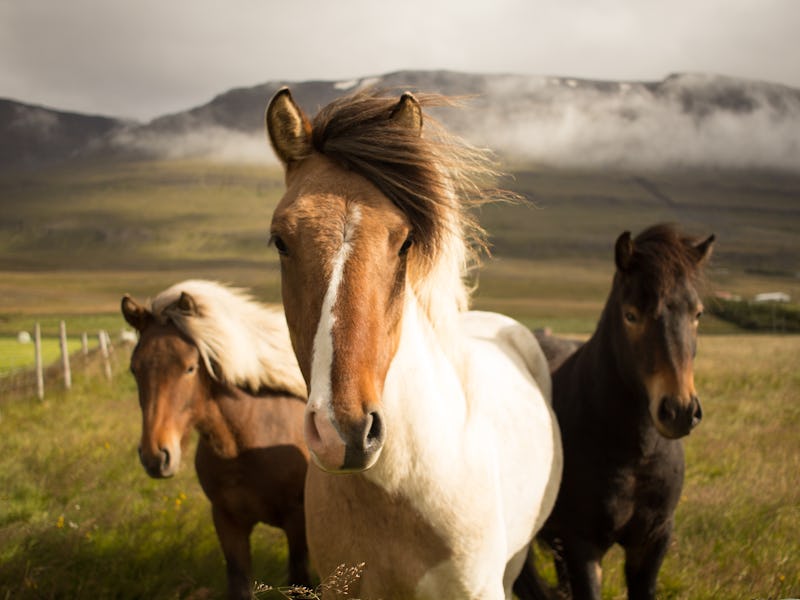Why 2 Horse Species Are All That's Left of a Massive Family of Animals
A huge and diverse genus changed suddenly in the 7th century.

Small and stocky with a dark plumed tail, the endangered Przewalski’s horse is the last wild horse species on the planet. Along with their distant cousin, the domesticated horse, they are also the only remaining members of the genus Equus. But as a landmark analysis of the horse genome released Thursday reveals, these two species are all that remain of a huge and diverse family of animals that shrank dramatically, beginning in the 7th century.
The past of the horse, researchers reveal in Cell, was much more diverse than the present.
This undertaking, which involved the genomes of 278 horse specimens from across Eurasia over the last 42,000 years — the largest genome collection ever created for a non-human organism — revealed two now-extinct lineages of horses that lived between 4,000 and 5,000 years ago. One lived in the Iberian Peninsula, while the other roamed in Siberia. This time period is suspected to be when huhumanss first put horses to work.
Grazing Przewalski's horses.
The domestication of the horse is key to understanding its genetic journey. While prehistoric remains show that other species of wild horses died out in the Americas and western Europe at the end of the Ice Age, nearly 10,000 years ago, breeding practices controlled by humans shaped what horses would become. The researchers behind the new study, which involved 121 people over 85 institutions, discovered a major shift in the genetic makeup of horses in Europe and Central Asia in the 7th and 9th centuries — the same period as the Islamic conquests that expanded Muslim rule across the Middle East.
The breeding of Arabian horses had a strong influence on the look of all domesticated horses.
Today, domesticated horses reflect the traits that were selected during this time period for body shape. Think of the Icelandic horse: a small, hairy, and hardy breed. The horses that lived across Europe during the 7th century looked like them, but today, they look like much more the horses Islamic conquerors were breeding for favorable traits.
“It was a moment in history that reshaped the landscape of horses in Europe,” study author and University of Copenhagen molecular biologist Ludovic Orland, Ph.D. explained Thursday. “If you look at what we today call Arabian horses, you know that they have a different shape — and we know how this popular this anatomy has been throughout history, including in racing horses.”
A graphical summary of horse genetics.
Two other important details emerged from the study: It’s only in the past 1,500 years that horses were selectively bred for speed, and their overall genetic diversity has sharply declined in the last 200 to 300 years. Just as horses have impacted human history — allowing our own species the ability to travel and conquer over long distances — we have changed theirs.
It’s also important to note that the “wild” horses of the United States aren’t truly wild; they are feral domesticated horses.
“In the last few hundred years, we have actually impacted the horse genome a lot more than in the previous 4,000 years of domestication,” Orlando says. What we picture as a horse today, he says, is very different than the horse we would have seen 1,000 years ago.
Abstract:
Horse domestication revolutionized warfare and accelerated travel, trade, and the geographic expansion of languages. Here, we present the largest DNA time series for a non-human organism to date, including genome-scale data from 149 ancient animals and 129 ancient genomes (R1-fold coverage), 87 of which are new. This extensive dataset allows us to assess the modern legacy of past equestrian civilizations. We find that two extinct horse lineages existed during early domestication, one at the far western (Iberia) and the other at the far eastern range (Siberia) of Eurasia. None of these contributed significantly to modern diversity. We show that the influence of Persian-related horse lineages increased following the Islamic conquests in Europe and Asia. Multiple alleles associated with elite-racing, including at the MSTN ‘‘speed gene,’’ only rose in popularity within the last millennium. Finally, the development of modern breeding impacted genetic diversity more dramatically than the previous millennia of human management.